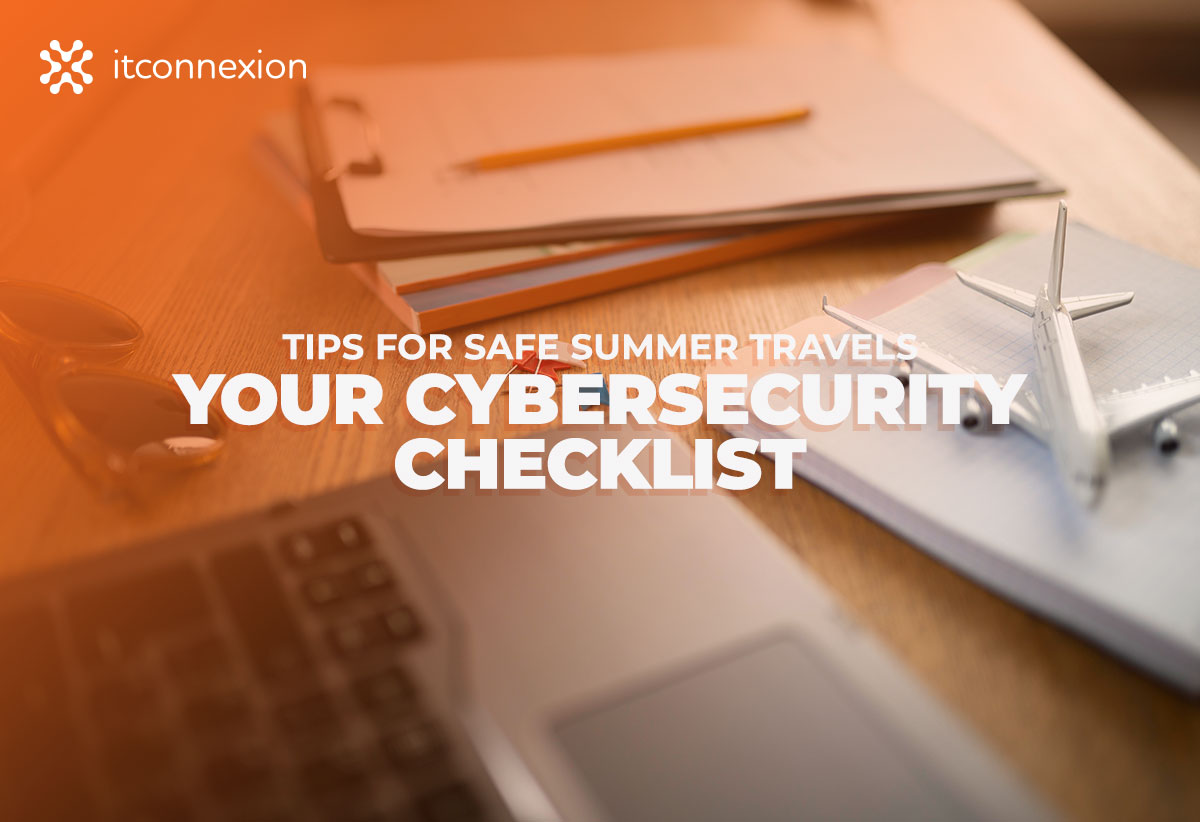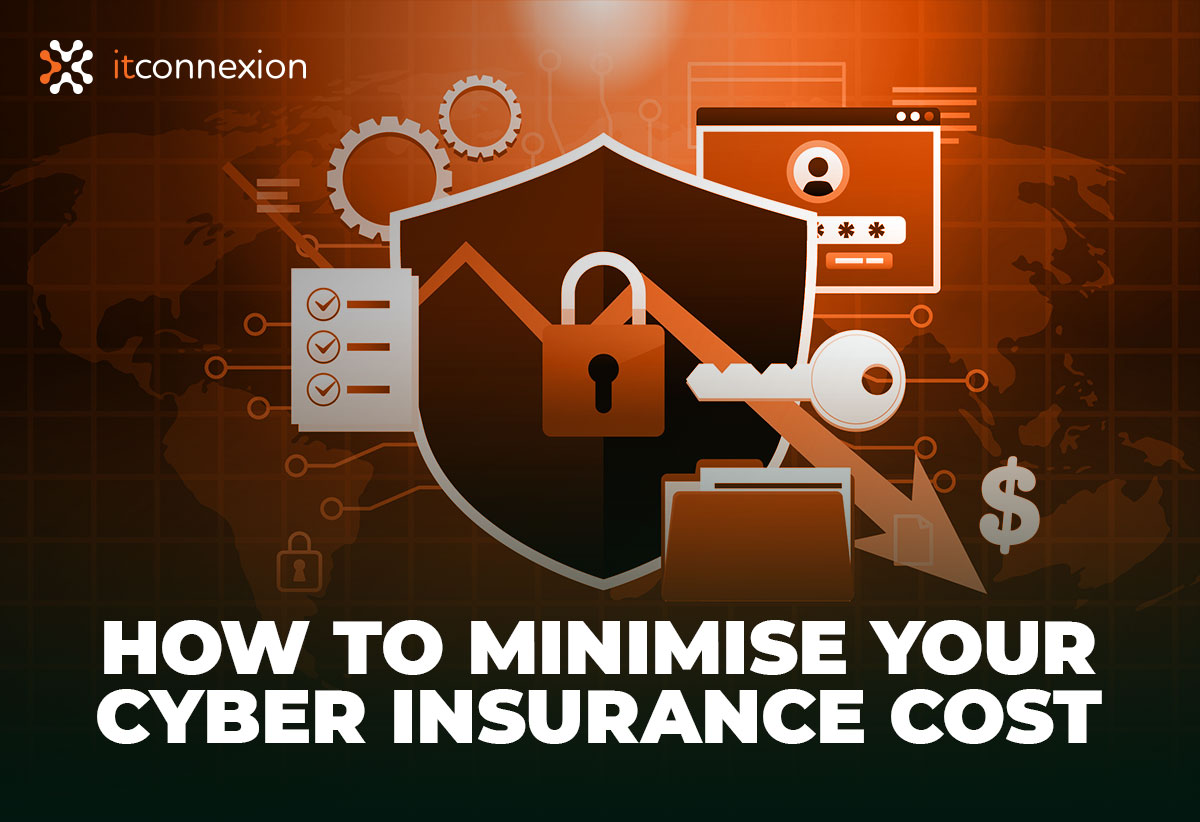Summer is here and with it comes vacation plans for many. Those looking to take some time away from work and home are likely making plans to secure their home, have their pets taken care of, and tie up loose ends at work. But how about securing your devices and your data while you’re away? Here are some things to take into consideration if you want to have a trip free of cyber worries.
Before you leave
Some of the things on your cybersecurity checklist can be taken care of before you leave. They include the following:
Make sure the operating systems and software on all the devices you are going to take along with you are up to date. Having to install updates while you are on the road can be a pain due to slow and unstable connections. Use your at-home Wi-Fi, which you know is secured with a password. (Right? If not—do that right away.)
You may want to take precautions to secure devices that you’ll be leaving behind in your workplace and home. If a burglar gets hold of your desktop, they should not be able to harvest any valuable data. All devices should be password protected (including the ones you are taking along with you).
Backup the valuable data on the devices you are bringing so that if you lose them, it won’t be a double disaster.
Do not announce the dates of your upcoming travel plans on social media. That’s a great way to alert criminals to case your house and break in during the time you’ll be gone. Post your travel pics when you get back. They will still be cool.
Disable the auto-connect options shortly before you leave and have your devices forget the network SSIDs in their lists. Threat actors can abuse these features for *man-in-the-middle attacks.
If you have contactless debit and credit cards, get shields in which to store them so you can carry them around without leaking information.
Think twice about bringing a multitude of devices. The chances of anything getting damaged, stolen, or lost are much higher when you’re on the road.
Make sure your travel insurance covers all the devices and any other valuables you plan to take along.
While you are traveling
Travel plans can range from road trips to a nearby camping spot to flights to five-star beach resorts. Because of the wide range of travel options, some of the following advice may or may not apply:
If you park your car at the airport, obviously make sure no valuable devices are left behind. This is also a good time to disable the Bluetooth of your phone, because the car is probably the only useful Bluetooth connection you need. And when Bluetooth is off, it can’t be abused.
Airports and other waypoints on your travels will often offer public, free, and unprotected Wi-Fi. Consider the risks associated with them when you use them, or use a VPN to enhance the security by encrypting your connection.
If you need to use Wi-Fi at your hotel, make sure their connections are secured with passwords. And if you need to access sensitive material for work, set up VPN on your laptop beforehand.
Privacy screens make sure that only the person sitting straight in front of the screen can read what is on it. This can stop people from secretly watching what you are doing. Good privacy screens are easy to apply and are available for laptops and many handheld devices.
Don’t use public computers for sensitive Internet traffic. This certainly includes online shopping and any other financial transactions. While you are traveling, it’s safer to spend money at your destination instead of online.
If you use webmail to read your mail when you are away from home, keep in mind that this may be less secure than reading the mail in your favourite email client. Some webmail services have html enabled by default.
Use a fully updated anti-malware solution for all your devices. Contact ITConnexion Team to find out which one is suitable for you.
Since you may not want to take your laptop and every other device with you as you go sightseeing, make sure there is a safe place to keep the items left behind. Not every hotel safe is big enough for a laptop. Ask your hotel concierge if they have other options for securing devices. Simply leaving them behind in your room is not the safest move.
If you travel abroad
Some extra attention to detail may be required when you travel abroad.
Make sure you leave your country with the devices fully charged. You may need to use them for a while before you get another chance to re-charge. It may require different cables, power plugs, and adapters to charge your devices at your destination or checkpoints along the way. Come prepared.
Not only Australia but also some other countries will look at your social media accounts to find any information that could make you a less welcome guest. It might be prudent to remove any questionable comments to thwart further investigations.
If traveling to Australia from abroad, be prepared that you might be asked to hand over your device and your password to get in. Make sure there is nothing to be found on it that you don’t want to be found.
When you get back
Back home safe and sound? Don’t rest yet. Check a few more things and then you can start posting online about your relaxing, fun, and incident-free vacation.
Update your anti-malware solution and run manual scans on your devices to check for any uninvited guests you may have picked up on the road.
If you bought devices abroad, check them for compliance and whether they are compromised. In some countries, devices are sold with monitoring software pre-installed.
Check your bank account for any unexpected withdrawals or spending. Warn your bank or credit card provider if you suspect foul play or if you have lost sight of your credit card at some point. it’s especially important to do this if you suspect your login credentials may have been stolen.
As an extra precaution, you may want to change the passwords that you used during your time away. If someone managed to get ahold of one during your trip, you’ll stop them from doing any damage with a changed password.
Don’t let all this ruin the fun
While most of the things mentioned above are precautions we (should) take every day, they are not the first ones that come to mind when you are planning that awesome trip you have worked for all year. But as always, it’s better to be safe than sorry.
Safe Travels!
Reference:
Man-in-the-Middle (MitM)
In cybersecurity, a Man-in-the-Middle (MitM) attack happens when a *threat actor manages to intercept and forward the traffic between two entities without either of them noticing. In addition, some MitM attacks alter the communication between parties, again without them realising. To pull this off, the attacker should not only be convincing in their impersonation but also be able to follow and influence the conversation between two or more parties. A MitM attack can be done between browser and Internet, for example, or between a Wi-Fi hotspot and an Internet user.
Threat actor
In cybersecurity, a threat actor is a group or person behind a malicious incident. As it is sometimes unclear whether an attack was done by one person or whether there is a group or organization involved, we use this as a general term to describe the responsible entity.
Source: MalwareBites





